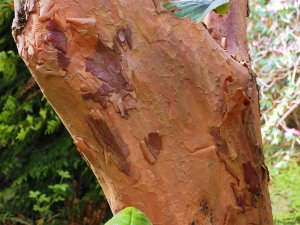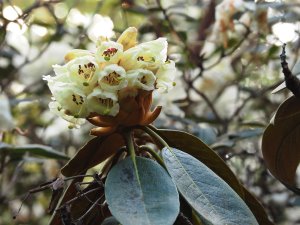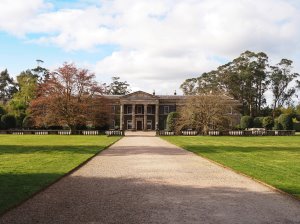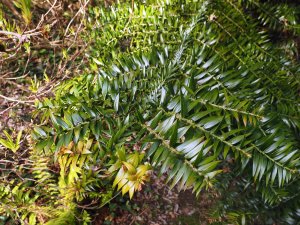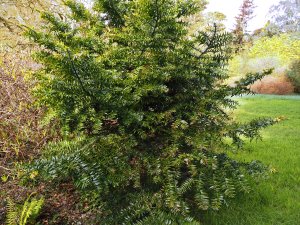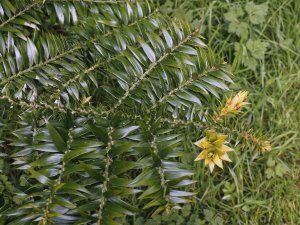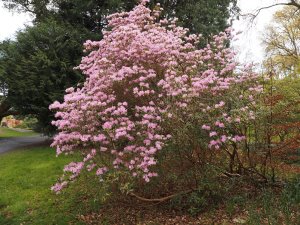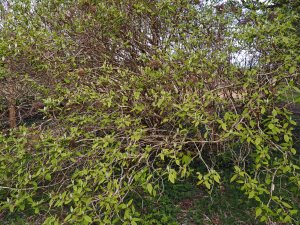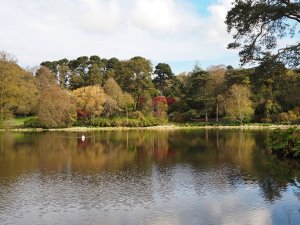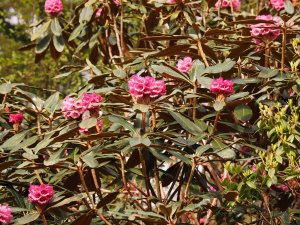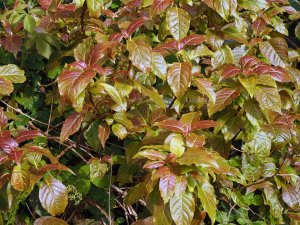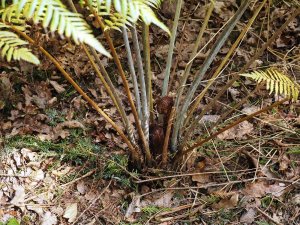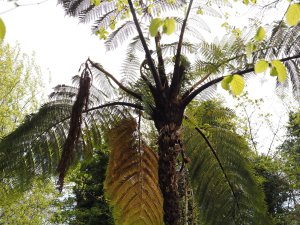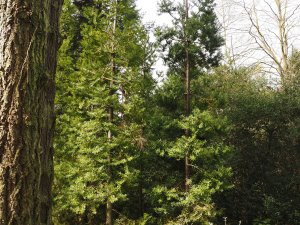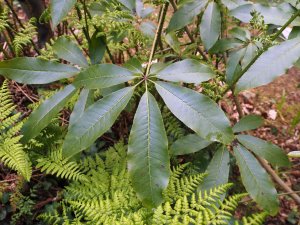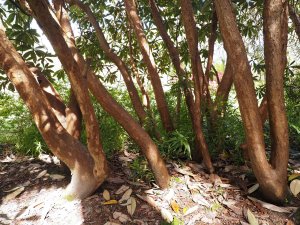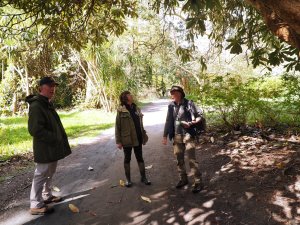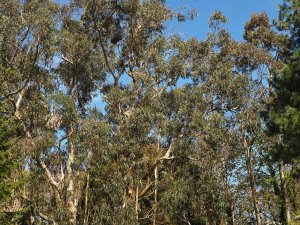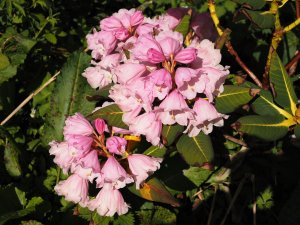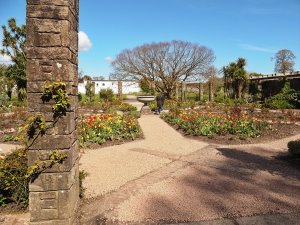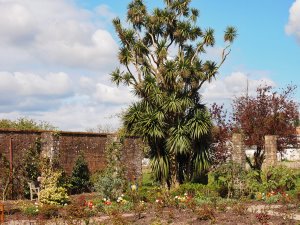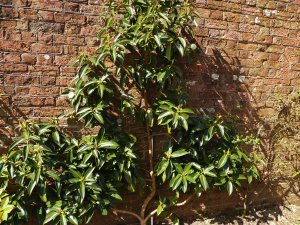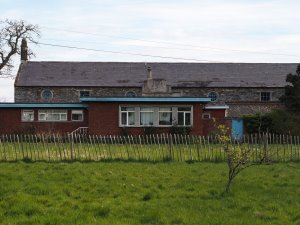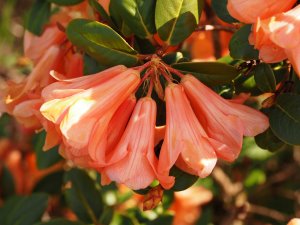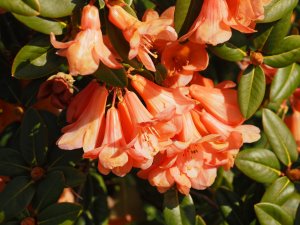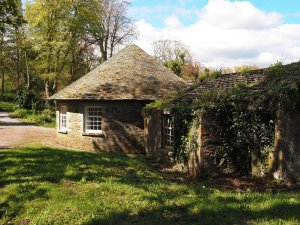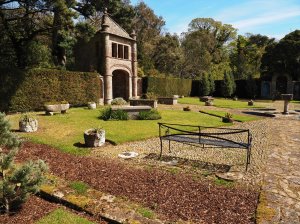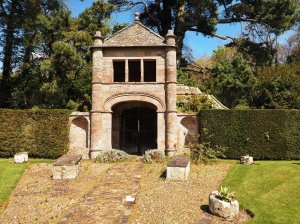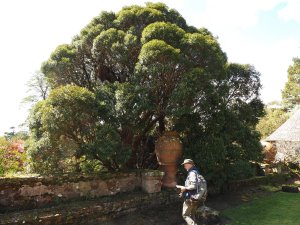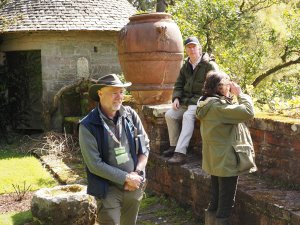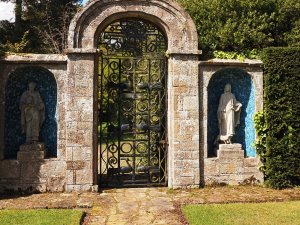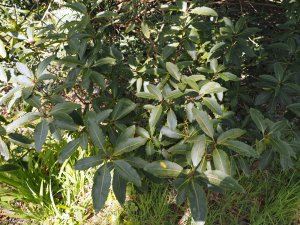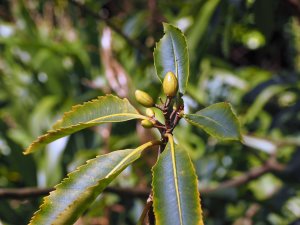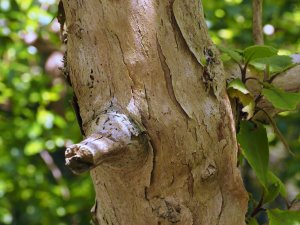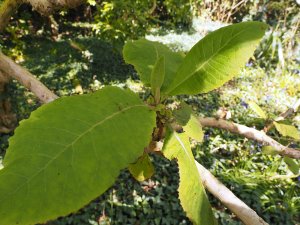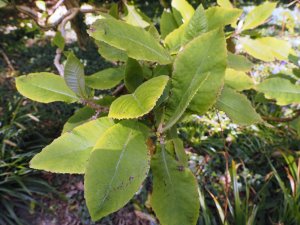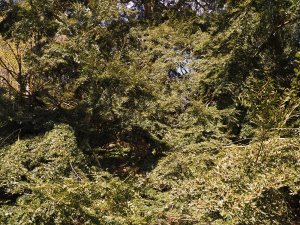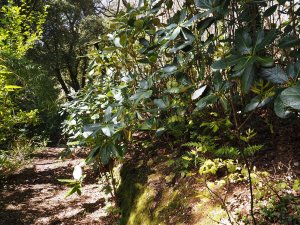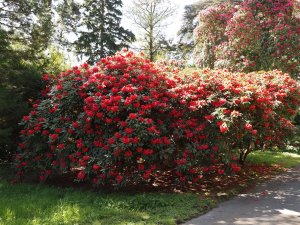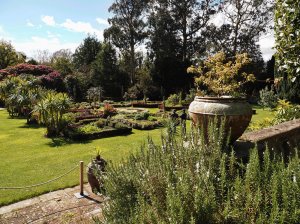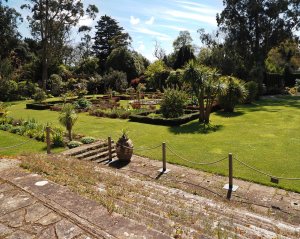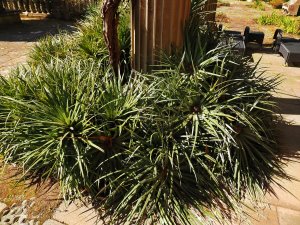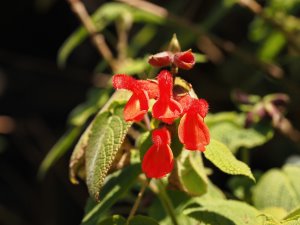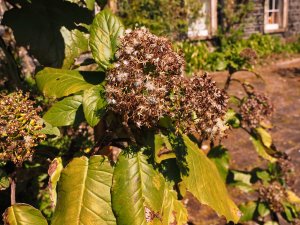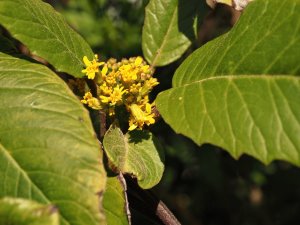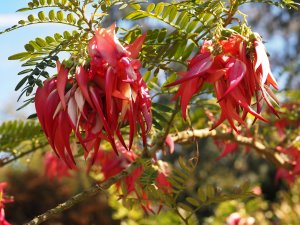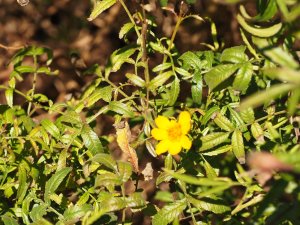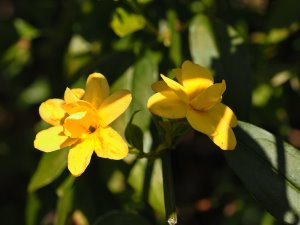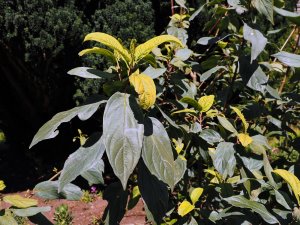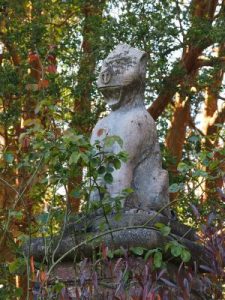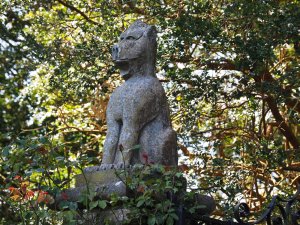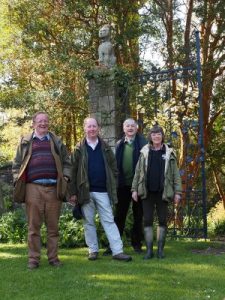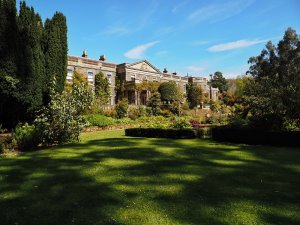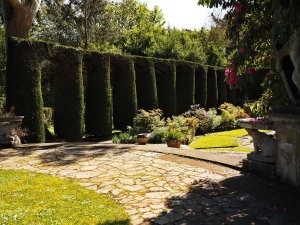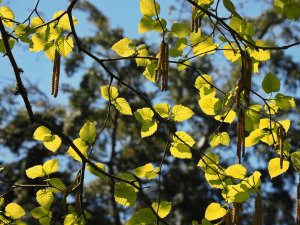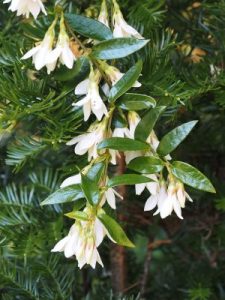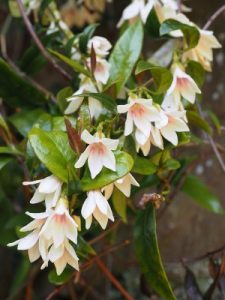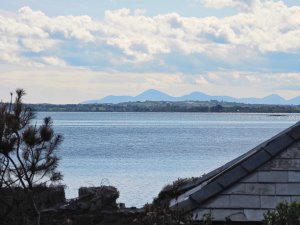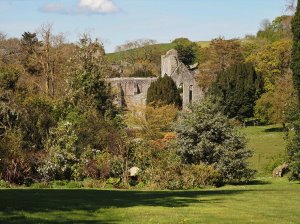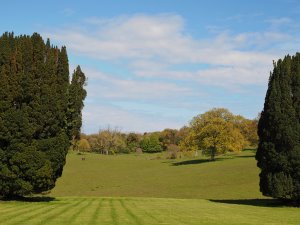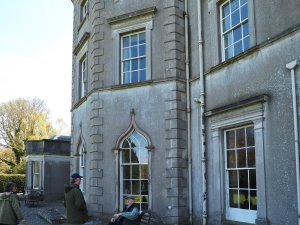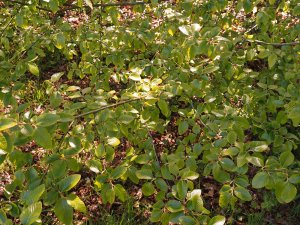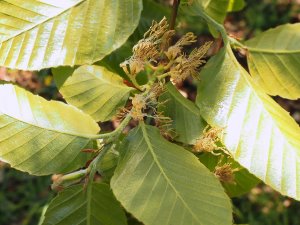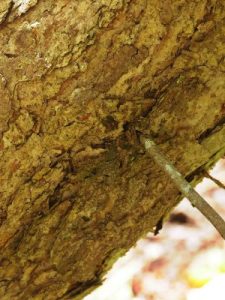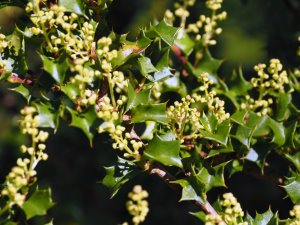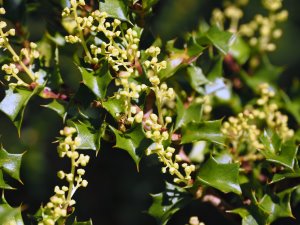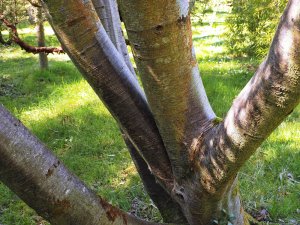Mount Stewart, then a few miles around the loch to Grey Abbey gardens.
The last flowers on Rhododendron
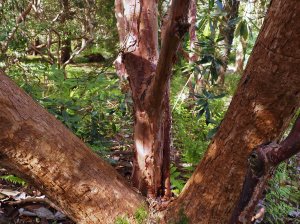

.
Rhododendron ‘Dr Stocker’.
Rhododendron arizelum.
A further view of the front of the house.
Araucaria bidwillii growing very happily.
Rhododendron davidsonianum in the landscape beside the lake.
A gigantic Hydrangea villosa.
The lake.
New growth on Rhododendron magnificum.
Rhododendron praestans.
Some of the largest Rhododendron sinogrande that I have ever seen.
An unidentified shrubby and trailing hydrangea.
Cyathea australis
Cyathea medullaris. We could not begin the grow this outside.
An amazing clump of Agathis australis outside. In shade these had much greener leaves than our plant.
Schefflera digitata – yet another new species.
Rhododendron magnificum towering above us – a huge clump.
A towering glade of Eucalyptus globulus which self-seeds itself everywhere below.
Rhododendron pachytrichum.
The walled garden which is 9½ acres in all but only a part of it is planted. Glasshouses all gone.
A gigantic Cordyline australis.
Polyspora trained up a hot wall and still in flower.
An attractive add on building to a listed one!
The first time that I have seen Rhododendron ‘Trewithen Orange’ for years.
Prumnopitys andina being grown as a hedging plant.
The, as yet, undeveloped farm buildings.
The old dairy which is now the entrance to the walled garden.
The entrance to the Londonderry Family burial ground.
Views from inside.
A massive Metrosideros excelsa and aerial roots.
Viewing across the lake below.
Statues by the gate to the family burial ground.
We were told that this was Pittosporum serratifolia. Only the seed heads gave away that it was a pittosporum. This name is not recognised in Hilliers or in New Zealand Native Trees.
Brachyglottis hectorii from New Zealand.
Griselinia littoralis grow like trees.
Nothofagus dombeyi – a huge tree by the lake with a massive side branch.
Lizzie & Terence by the lake.
Big leaf rhododendron seedlings everywhere in the shade – all self-sown.
A superb rhododendron on the main drive.
The views from the front of the house.
Fascicularia bicolor surrounds the pillars above the portico.
The extraordinary red flowered and vigorously climbing Salvia gesneriiflora. I thought it was Salvia dombeyi but was quite wrong. This grows to 20 feet.
Tetra[?] with flower and seeds. I did not catch the full name but it looks (to me) like a Brachyglottis.
Clianthus puniceus perfectly happy outside.
Tagetes lemmonii is a clump forming species which is one of the background species to our African marigolds. Not an annual at Mount Stewart.
A double flowered Jasminum mesnyi.
Viburnum cylindricum.
The baboon statues.
We were told this was Bowkeria verticillata but it does not resemble the Ventnor plant?
The party with the baboons.
Mount Stewart looking back from the loch.
The arched yew hedges.
Betula maximowicziana with flower tassels.
Prumnopitys andina as a hedging plants to replace the yew hedges which had become diseased. A novel idea using a very rare conifer.
The view of the house from the west – 11 acres in all of formal/ herbaceous gardens.
The best new plant seen today in our 3.6 mile walk (so far) was Elytropus chilensis. A dainty climbing plant.
The view across the loch from the car park.
We now move along the edge of the loch for a few miles and arrive at nearby Grey Abbey where we start with the Southern Hemisphere Garden which is exceptional. All the Nothofagus species in one place.
The old Cistercian chapel below the house.
The view of and from the front of the house.
The full frontal.
Nothofagus alessandrii.
Nothofagus glauca.
The holly-like Griselinia jodinifolia which I have only seen before at Tregrehan.
Nothofagus pumilio.
I have never seen Mitraria coccinea growing as large as this especially outside.
Drimys winteri var. andina as labelled but correctly now Drimys andina.
Another genus I have never heard of – Pitavia punctata. Not in Hilliers or the RHS Encyclopaedia.
Baccharis patagonica with tiny leaves.
Nothofagus nitida.
Maytenus magellanica in flower as a young plant.
Nothofagus moorei.
A young Callitris rhomboidea with its first seed head.
The darkest red Embothrium which we have seen so far.

